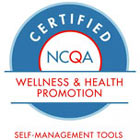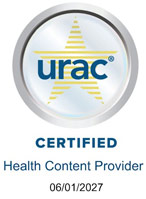Diabetes is a condition in which your body can't normally process a sugar called glucose. There are 3 types of diabetes: type 1, type 2, and gestational.
Understanding Type 1 DiabetesDiabetes is a condition in which your body can't normally process a sugar called glucose. There are 3 types of diabetes: type 1, type 2, and gestational.The most common form of type 1 diabetes is considered an autoimmune disorder. This means your body's immune system destroys, or tries to destroy, the cells in your pancreas that make insulin.Type 1 diabetes is most often diagnosed in children and young adults, but it can start at any age. Type 1 diabetes is a chronic condition that doesn't go away. But you can learn to manage it and stay healthy.CauseGlucose is a type of sugar that is absorbed into your bloodstream when you digest food. As the amount of glucose, or sugar, in your blood goes up, clusters of special cells in your pancreas called beta-cells make insulin.Insulin is a hormone that works like a gatekeeper. It allows glucose to move into the cells and tissues in your body, where it is used for energy and to help your organs function normally.With type 1 diabetes, your immune system attacks your insulin-producing beta-cells. Without these beta-cells, your body doesn't have enough insulin. Without insulin, glucose can't enter your cells and builds up in your blood, starving your cells.Scientists don't know what exactly causes the immune system to attack beta-cells. But genes seem to play a role, and other factors may act as a trigger.DiagnosisType 1 diabetes often comes on suddenly. Some of the symptoms of type 1 diabetes are:Frequent urination Thirst Hunger Unexplained weight loss Fatigue, and Blurry vision The symptoms of type 1 diabetes are often similar to other medical conditions. See your healthcare provider for a diagnosis.He or she will test your blood. Your blood will be tested after you've gone without food for a certain period of time.A blood glucose test shows the amount of glucose in your blood at the time of the test. A normal blood glucose level is between 70 and 99 milligrams per deciliter. If your fasting blood glucose test is 126 milligrams per deciliter or higher on two tests, you likely have diabetes.An A1C blood test is also used for diagnosis. It shows your average blood glucose levels over several months. A normal A1C level is less than 5.7 percent. If your test results are high, you may have diabetes.Other blood tests can help show whether you have type 1, type 2, or gestational diabetes.TreatmentIf you have type 1 diabetes, you'll need to learn how to manage it. You'll need to test your blood sugar, or glucose, levels every day. You may have to check them several times during the day if you need regular insulin therapy or if you are having symptoms.You will also need to have regular A1C tests. This test shows how well you've been controlling your blood sugar over a 3-month period.You'll also need to take extra care when you're sick. Getting sick can make controlling your blood sugar difficult. Your healthcare providers will recommend vaccinations to help you stay well.Good blood sugar and blood pressure control helps reduce your risk for complications. Even with good control, you may need to see an eye doctor, dentist, and foot specialist on a routine basis for monitoring and treatment.You should also wear a medical identification bracelet. This can help you get the right treatment during an emergency.Things to RememberYou can be diagnosed with type 1 diabetes at any age.Type 1 diabetes is when cells that make insulin are destroyed by your immune system.You'll need to take insulin to treat your type 1 diabetes.What We Have LearnedIf treated, type 1 diabetes goes away. True or false? The answer is false. Type 1 diabetes is a condition that doesn't go away. But you can learn to manage it and stay healthy.Adults don't get type 1 diabetes. True or false? The answer is false. Type 1 diabetes is more commonly diagnosed in children and teens, but anyone can get it at any age.
© 2000-2025 The StayWell Company, LLC. All rights reserved. This information is not intended as a substitute for professional medical care. Always follow your healthcare professional's instructions.

